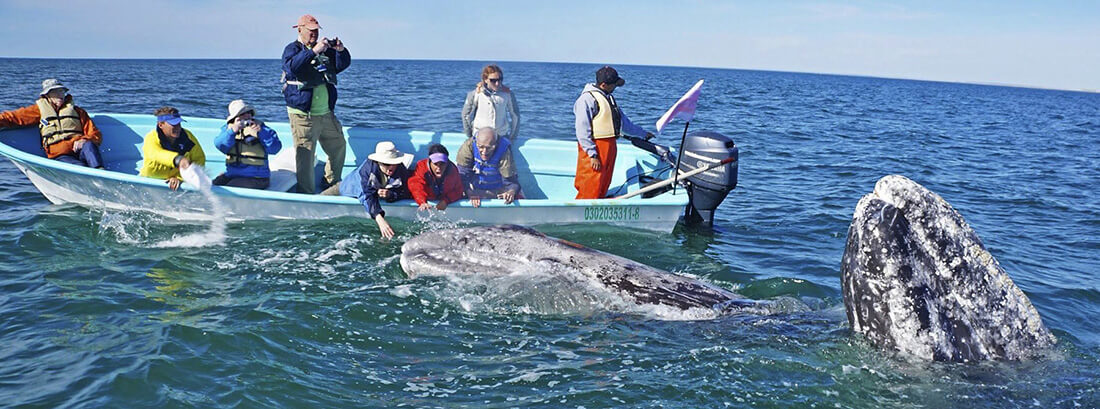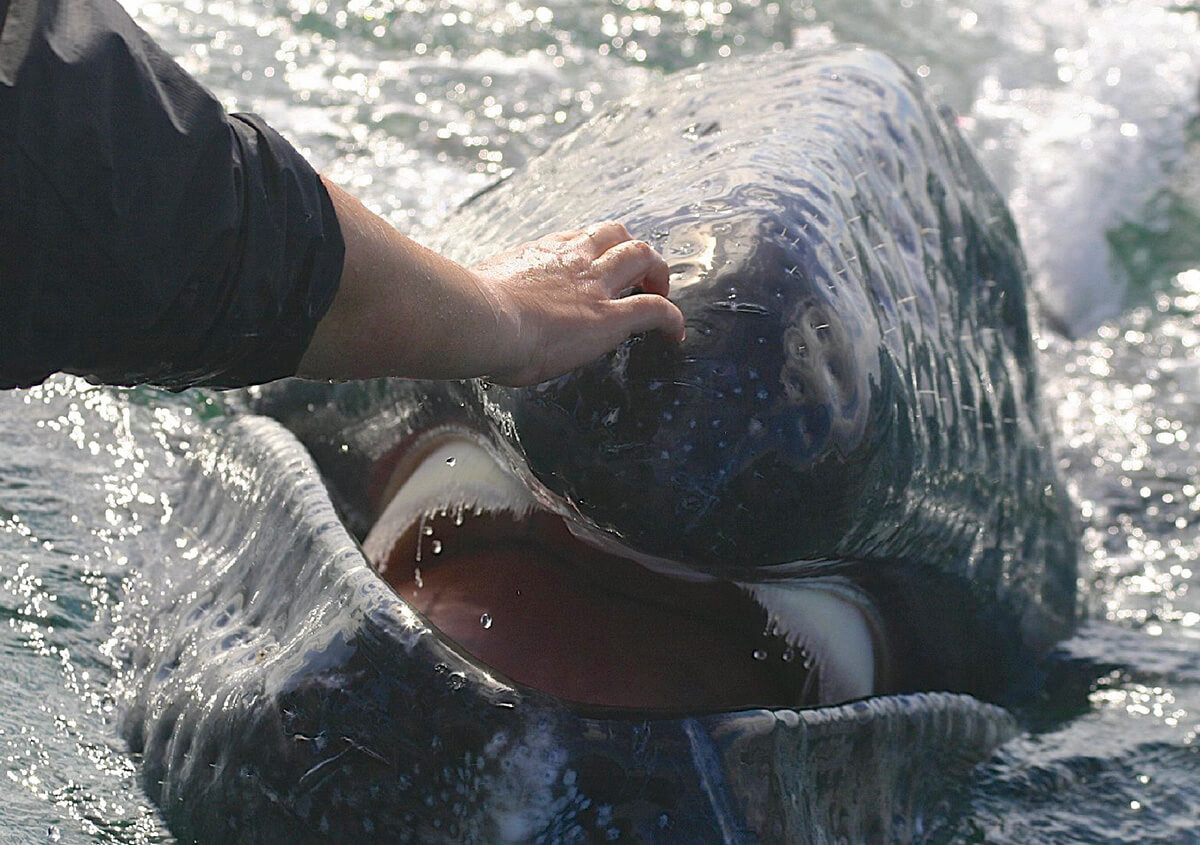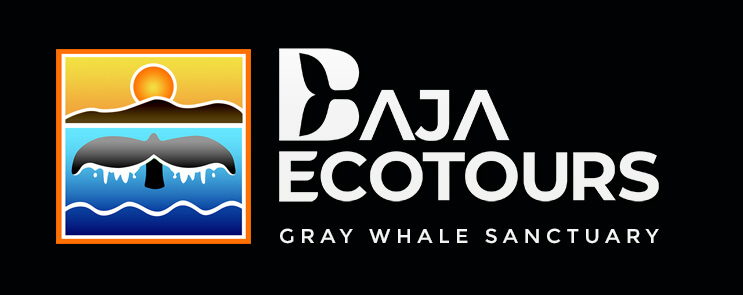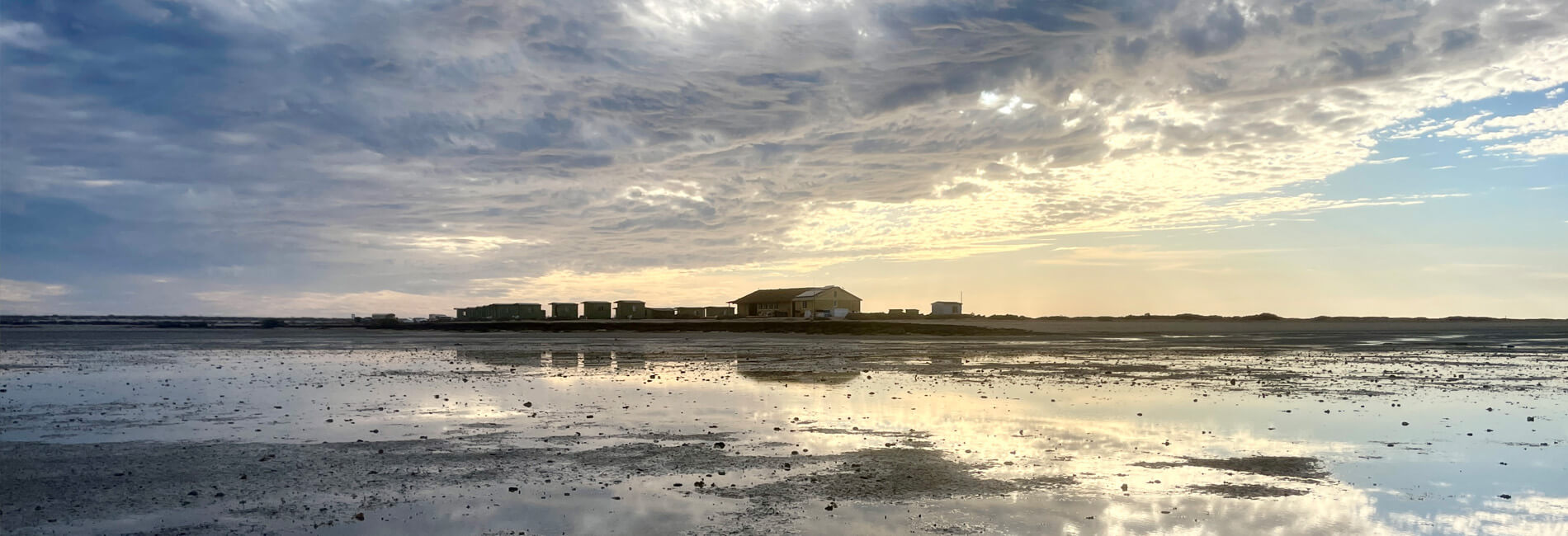Laguna Baja ARIC of San Ignacio Lagoon
In the Community
Many years ago, as the whale watching industry grew in San Ignacio Lagoon, our co-founder Maldo Fischer recognized the need for guidelines to protect the whales and ensure sustainable tourism. Driven by his genuine love and respect for the whales, Maldo saw that without some agreement among all captains and guides, the whale sanctuary could suffer from overcrowding and aggressive actions. In other Mexican lagoons, it was common for captains of four or more boats to crowd a single whale, driven by tips and the desire to please the tourists.

Seeing the potential for similar issues, Maldo called a group meeting with three other companies to discuss the situation. Each year, 27 permits are issued by the government for whale watching in San Ignacio Lagoon. Our company holds four of these permits, while the other 23 are owned by locals. This group of captains and boat owners recognized that the practices in other lagoons were not ideal and wanted San Ignacio Lagoon to set an example of responsible cooperation between whales and whale watchers.
From this discussion, Maldo and the others founded the Laguna Baja Asociación Rural de Interes Colectivo (ARIC) in December 2000. It became a voluntary membership organization for captains, workers, and others involved in whale watching. The association created new, self-enforced guidelines for San Ignacio Lagoon, funded by a membership fee. These fees support a local "sheriff" who monitors the entrance to the whale watching area, ensuring compliance with the guidelines. The sheriff tracks boats entering and leaving the area and radios captains when their 1.5-hour maximum time is up. The sheriff also enforces rules and handles any issues. Camps cooperate by providing gasoline and supplies to the sheriff. San Ignacio Lagoon is the only lagoon with a rescue boat and sheriff.
Key guidelines include:
- No more than 2 boats per whale, with the second boat waiting at a distance rather than crowding. The law allows 4 boats per whale and that is the standard in the other lagoons.
- Each boat can be in the observation area for a maximum of 1.5 hours, with no more than 16 boats in the area at a time. The boats must be dispersed so that they do not bother or disrupt the whales.
- All captains who work with the whales are required to register with Secretaria de Cominicaiones y Transporte (SCT).
- Before each season all the service providers and workers meet for a workshop to recognize and review the rules for whale watching.
Initially, there was hesitation among locals to join the association due to the additional fees. However, they eventually agreed, and the cooperation has been wildly successful. The association has become a model for respectful wildlife interaction, providing incredible up-close experiences for tourists while protecting and the whales.
Maldo has served as President of the Association for many years. As pressure from high-volume companies entering the lagoon increases, the ARIC's commitment to protecting the whales and the environment remains at the forefront of their efforts.

From the Author of “The Lagoon” James Dorsey
I first met Maldo Fischer in 1998 during my first visit to San Ignacio Lagoon. I had previously seen the chaos of Magdalena Bay and the overcrowding of Scammon’s lagoon with whales and boats bumping into each other in utter chaos. San Ignacio was different, and every panga driver I spoke to told me the reason was Maldo Fischer.
To him the whales were family, and all of his drivers were instructed to never invade the animal’s comfort zone. He and his crew impressed me enough that I worked in the lagoon for 22 seasons as a naturalist. While on the water, engines were cut, and we waited for the whales to approach us in their own time. They always commanded our respect.
Today, 27 years later, those rules are unchanged. The crew of Campo Cortez always puts the safety of the client and the animal first. That is why other lagoon camps strive to emulate Maldo Fischer.




